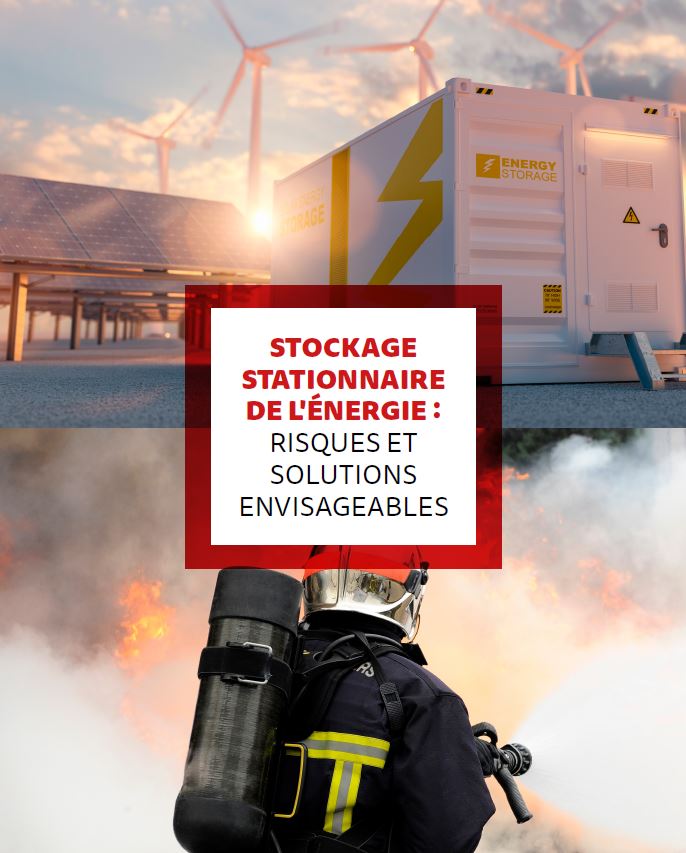This practical overview deals with issues relating to the actual risks presented by electrochemical storage elements in building applications and associated electrical installations, and attempts to provide clear answers to firefighters' questions
The rise of renewable energies and the need to find alternatives to centralized distribution of electricity are leading to the installation of electrochemical batteries. These batteries allow intermittent energy generated by renewable energies to be stored for later use.
In case of a fault or an incident, intervention on this type of equipment presents risks which must be taken into account to manage the action of the emergency services in the best possible way.
On the initiative of the French General Directorate for Civil Security and Crisis Management (DGSCGC), in response to a proposal from the Savoie Departmental Fire and Rescue Service, an interdisciplinary group of experts was formed.
Its activities, carried out over the last four years, have focused on identifying the different technologies, analysing previous studies on the subject, standards, risk analysis, tests, systemic analysis, possible operational techniques, and possible prevention measures.
The objective was to understand better the possible risks related to the use of stationary energy storage batteries in buildings (in closed spaces) to enable the fire and rescue services to adapt their operational responses, but also to provide an understanding of the phenomena observable during accident situations involving this equipment. This comprehension makes it possible to work on risk prevention, training of emergency services and to provide guidance for future fire regulations.
Nearly 6 tonnes of batteries were tested on this occasion in various deteriorated situations.
The study identified specific cases, in particular the vaporisation of flammable electrolyte in an inert atmosphere, which are of major interest in terms of risk assessment and management.
A complete report, co-financed by the SDIS73 and the CEA, is now available for free to the concerned sectors.
The results of this work were presented at the national fire brigade congress in Nancy and a conference organised by the SDIS73 and INES will take place at Savoie Technolac on 20 October 2022. An english version will soon be published and a conference for fire fighters at international level is planned for 2023.

Download the report (french version)
The interdisciplinary group of experts gathered :
- personnel from the SDIS73, SDIS38 and SDMIS (69) for their operational and chemical risk analysis (VDIP) contributions
- Scientists/researchers from the CEA LITEN laboratories of INES and the Grenoble centre for their expertise on batteries, as well as personnel from the Local Security Unit of the CEA centre in Grenoble
- experts from SNAM, Elektek and ACCUWATT